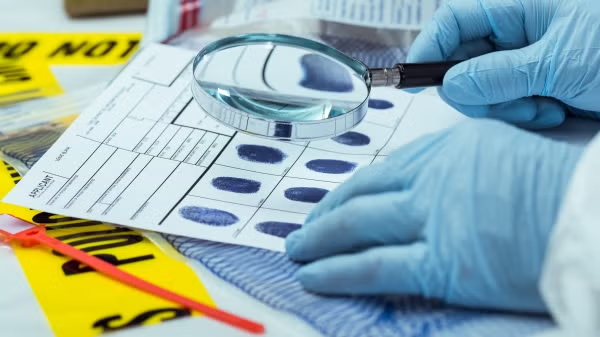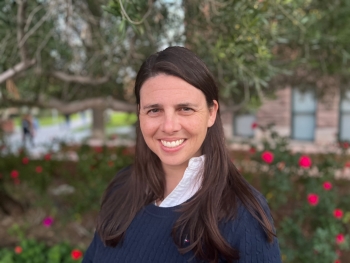ASU professors explore benefits of sharing 'hidden' identities in the classroom
Every person has characteristics, beliefs, values and affiliations that they identify with. These identities can define and distinguish people from one another while also shaping communities and behaviors, and influencing how people interact with the world around them.
There are some identities that people may be reluctant to share — called concealable stigmatized identities, or CSIs. These refer to aspects of a person's identity that might not be immediately visible or apparent to others, such as mental health and sexual orientation, that often carry significant social stigma, discrimination and prejudice.
This is what leads people to hide or not reveal them to others in various social contexts openly, such as in STEM spaces for example, due to fear of being judged or treated differently.
“The culture of science typically is that we don't talk about identities. We leave our identities at the door. We pretend that science is not political, that identities don't matter at all, when we know that that's not actually true, and as a result, I think a lot of times instructors — and then by proxy students — feel like they can't actually bring their full selves to the science classroom,” says Sara Brownell, director of the RISE Center and President’s Professor in the School of Life Sciences.
Brownell recently authored a paper with Katelyn Cooper, assistant professor in the School of Life Sciences, titled "Beyond Gender and Race: The Representation of Concealable Identities Among College Science Instructors at Research Institutions."
The paper explores the hidden identities of professors and undergraduate students to understand the potential influence professors can have as role models, and expands on previous research in this area.
Brownell and Cooper surveyed science professors and undergraduate students nationwide. The survey asked professors to self-report any CSIs that they have and whether they openly shared those CSIs with their students, as well as their reasoning for or against sharing, and compared the number of CSIs among professors with the amount among students.
“Until we did this study, we didn't know the percentage of faculty and science that have these CSIs. No one had any idea that 35% of faculty report struggling with anxiety. No one had any idea that over 26% of faculty experienced depression. No one had any idea that 6.8% of current science faculty identifies LGBTQ,” Brownell says. “Just those numbers alone are really important because, for the longest time, people have wondered and considered whether faculty hold these identities, and no one collects these data.”
Brownell says that national agencies like the National Science Foundation only collect race, ethnicity and disability status, as well as gender.
“So many of these concealable stigmatized identities are just not collected, and so that alone is really important for this work so now departments, professors, students or anyone can get a sense for who instructors actually are in the sciences, which we didn't have before.”
Brownell and Cooper were curious about professors’ reasoning behind their decision to reveal their CSIs or not. Was it because there's this culture of science that tells you that you're not supposed to reveal identities, or because there's a negative consequence?
“What we saw more often than not was that people said ‘I don't reveal because of the culture of science — people just don't do it. I've never heard anyone do it,’ or, ‘I don't know if anyone would actually benefit’ as opposed to ‘I'm worried I'm going to get fired.’ That set of data was very surprising to us,” Brownell says.
Cooper says she found it interesting that the top reason that people who struggle with mental health, namely anxiety and depression, had for being reluctant to share these identities with the whole class is “that they typically don't share that identity in general, which is a reflection of just the stigma against mental health in the United States.
"An overarching theme that we've seen in all this work is that oftentimes it's not the consequences that are keeping faculty from revealing or keeping instructors from revealing, but it's just the unrealized benefits.”
Another key aspect of the study is that it compared the percentage of students with these identities with that of instructors. Overall, more students report having these identities than instructors, and this difference is magnified when considering that few instructors reveal these identities to students in the classroom. So, instructors not revealing their CSIs to students makes students with CSIs feel like they have even fewer role models.
While Brownell and Cooper aren’t saying that everyone should reveal personal identities, Brownell says they “are advocating for people to just think about it, because it became clear that people weren't.
"What we want to encourage people to do is to consider the possible benefits of being able to reveal those identities both to themselves and to the students.”
More Science and technology

A spectacular celestial event: Nova explosion in Northern Crown constellation expected within 18 months
Within the next year to 18 months, stargazers around the world will witness a dazzling celestial event as a “new” star appears in the constellation Corona Borealis, also known as the Northern Crown.…

ASU researcher points to fingerprints as a new way to detect drug use
Collecting urine samples, blood or hair are currently the most common ways to detect drug use, but Arizona State University researcher Min Jang may have discovered something better.Fingerprints…

Learn about the secrets of forensic science straight from the experts
Over the next week, true crime enthusiasts will have a rare opportunity to discover the secrets of forensic science as experts share techniques for tracking down criminals.Behind Crime Scene…



